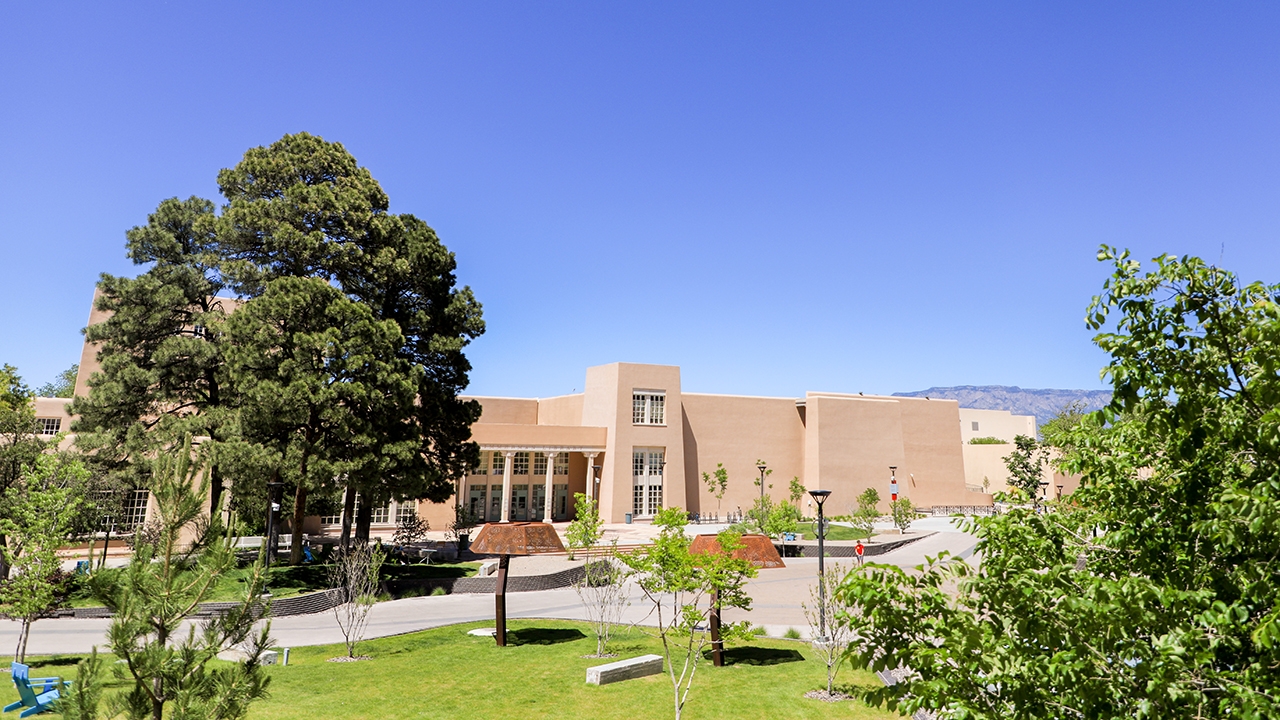The November 2020 General Election will be crucial for many reasons, but especially for academic libraries across the state of New Mexico. General Obligation (GO) Bond B, if passed, will provide publicly funded New Mexico libraries with a total of $9.5 million to help with a variety of resources.
Broken down, GO Bond B will provide $3 million each for academic and public school libraries, and $500,000 for tribal libraries. If Bond B is approved by voters, nearly 30 academic libraries, including each of UNM’s campus libraries – UNM Main, UNM Health Sciences Library and Informatics Center (HSLIC), UNM–Gallup, UNM Los Alamos, UNM Taos and UNM Valencia, will receive much-needed funding to support the success of college and university students in New Mexico by providing improved access to quality resources and information as well as access to many essential online resources even more important now as students and faculty rely on digital access during the pandemic.
“At the University of New Mexico, GO Bond funding is essential to supporting our students and faculty as they engage in learning and research,” said Mark Emmons, associate dean, College of University Libraries & Learning Sciences. “We spend our allocation on collections and would not be able to offer the range of information sources without the generosity of our New Mexico citizens and Legislature.”
How academic libraries contribute to student success...
Luckily, academic libraries in New Mexico already had significant digital content, electronic resources and sharing consortiums in place, and were in a great position to continue serving students remotely when the COVID-19 pandemic hit. Below is a list of the numerous ways academic libraries contribute to student success.
- Curbside pickup for materials
- Technology loaning (laptops/iPads, Webcams, Wi-Fi Hotspots, calculation)
- Placement testing facilitated through the library
- Virtual reference (Zoom, chat through library homepage, email, voice, text)
- Scanning materials for patrons and emailing
- Interlibrary loan/document delivery
- More funding for electronic resources (i.e. ebooks)
- Constant marketing of Library services (direct emails, websites, social media)
- Virtual work for library student employees to improve access to patrons
- More virtual online presentations including open houses, new faculty and student orientations, library bibliographic instruction
- Highlighting resources (i.e. online resource of the week)
- Moving subscriptions to newspapers online
- And others
At UNM, including University Libraries and Health Sciences Library & Informatics Center (HSLIC), 2018 funds allowed collaboratively purchase of several subscriptions including Academic Search Complete, a comprehensive scholarly, multi-disciplinary full-text database that includes journal articles from a wide range of academic disciplines, and CINAHL, an index of English-language and selected other-language journal articles about nursing, allied health, biomedicine and healthcare.
Academic Search Journal is a very popular resource for students studying Anatomy & Physiology, Biology, Occupational Therapy, Pharmacy, Psychiatry, and many other subjects offered at UNM’s Health Sciences Center (HSC), while CINAHL is a popular choice for students at UNM’s Health Sciences Center studying Nursing, Family & Community Care, Native Health, Nutrition, Orthopedics, Pediatrics, Population Health, and many others. Academic Search Complete and CINAHL are just two examples of resources purchased by UNM using bond funding.
Additionally, UNM has used GO bond funds to purchase new books and provide access to a wide range of specialized databases including Business Source Complete, American History & Life, Modern Language Association Bibliography, Bibliography of Native North Americans, RILM Abstracts of Music Literature, IEEE Xplore, and PsycINFO.
Many libraries throughout New Mexico do not currently have the capability to serve their respective communities. Approximately 40 percent of New Mexico libraries report they do not provide broadband internet access. Of this, approximately 24 percent are related specifically to academic libraries. In terms of equipment, about 25 percent of New Mexico libraries provide services with outdated computers that are five or more years old; 16 percent of academic libraries reported that they have computers that are 3-4 years old, 20 percent had computers 4-5 years old, 24 percent had computers that were older than 5 years.
Staffing at libraries is also problematic with 84 percent of libraries reporting that their staffing budget has decreased or stayed the same in the last three years. Academic libraries report the highest percentage of decreased budgets, but they were one of the first entities to step up when the pandemic hit last winter.
For more information, visit GO Bond Issue B: What is it and how does it affect us?


